When you find your disk partition is about to run out of space, you may want to extend partition Windows 8. Do you know how to do that? Well, this article might be helpful. Partition Magic introduces a powerful partition manager MiniTool Partition Wizard and a Windows built-in tool Disk Management to help you do that.
When you use your PC for a while, the data saved on the partition will increase, and the data will take up a lot of disk space. When there is insufficient space on Windows 8, this can affect PC performance and cause the PC to run slowly or crash.
In order to keep your Windows 8 computer running at high performance, it is recommended that you leave enough space on your computer. Therefore, it is very necessary to expand the size of the Windows 8 partition.
How to extend partition without data loss on Windows 8? You can use a free partition manager – MiniTool Partition Wizard and a Windows built-in tool – Disk Management. Now, you can have a try.
How to Extend Partition Windows 8 with MiniTool Partition Wizard
To extend partition Windows 8, you need professional and secure software to help you. MiniTool Partition Wizard is a good choice. Its Extend Partition feature can help you increase the partition. With its Extend Partition feature, you can get free space from any other existing partition or unallocated space to extend the partition.
Additionally, it is free disk partitioning software specially designed to manage partitions and disk usage without causing any damage to the original data. With its various powerful features, it can handle all kinds of disk and partition jobs, such as convert MBR to GPT, 100 disk usage Windows 10, disk write protected, etc.
To extend partition Windows 8 with MiniTool Partition Wizard, first you should click the button below and download this free program on your computer. Now, you can use the Extend Partition feature to do that. Let’s take a look at how to do it step by step.
MiniTool Partition Wizard FreeClick to Download100%Clean & Safe
Step 1: Launch MiniTool Partition Wizard to enter its main interface to extend the partition in Windows 8.
Step 2: On the main interface of this software, you can see all the information about the disks and partitions. After confirming the disk partition information, select the desired partition. Then right-click the partition to be extended and select Extend. Alternatively, you can also choose to click Extend Partition from the left action panel after highlighting the desired partition.
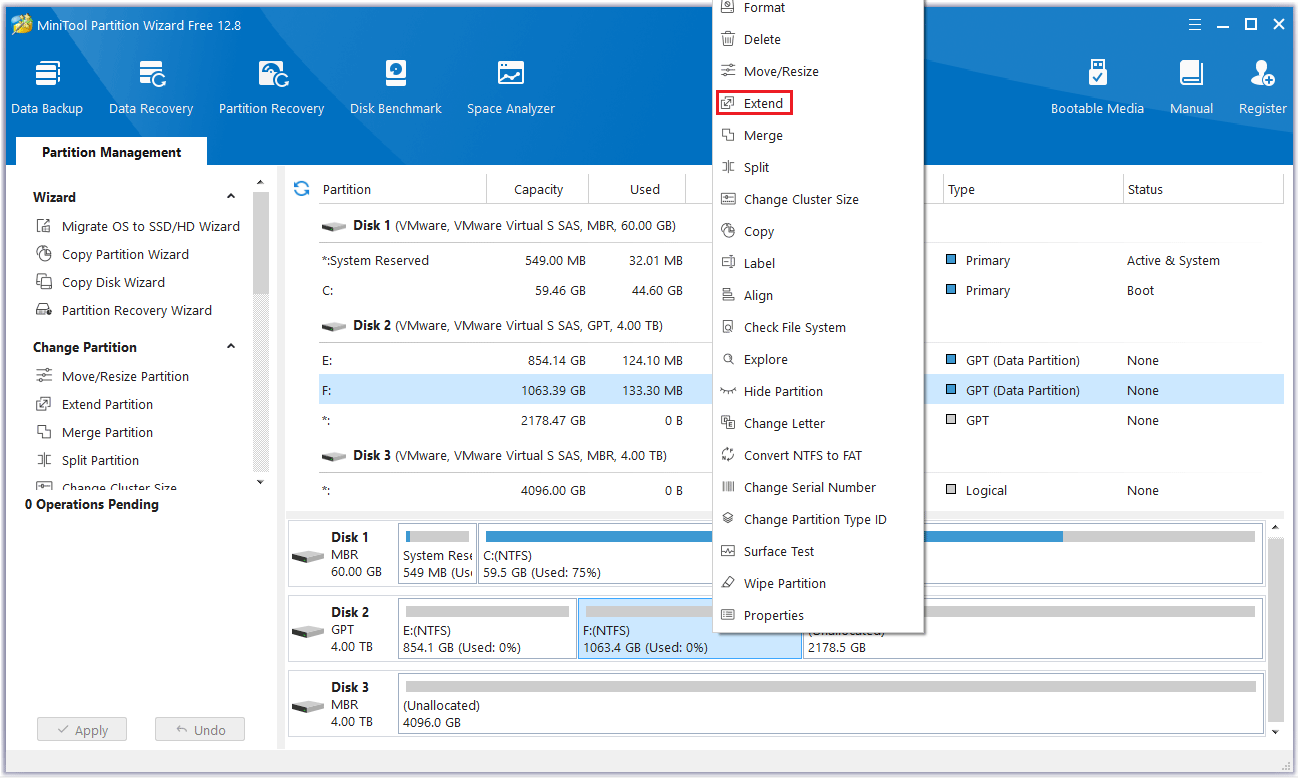
Step 3: Click the down arrow from “Take Free Space From” and select the partition or unallocated space from which you want to get expansion space. You can select any unallocated space or partition from the selected disk to extend the partition.
Then, you can drag the sliding handle left or right to decide how much available space it takes up, and the partition size will change intuitively. After that, click OK to return to the main interface.

Step 4: You can see that the partition has been enlarged, but it has not been applied to the computer yet, so you need to click the Apply button to perform all changes.
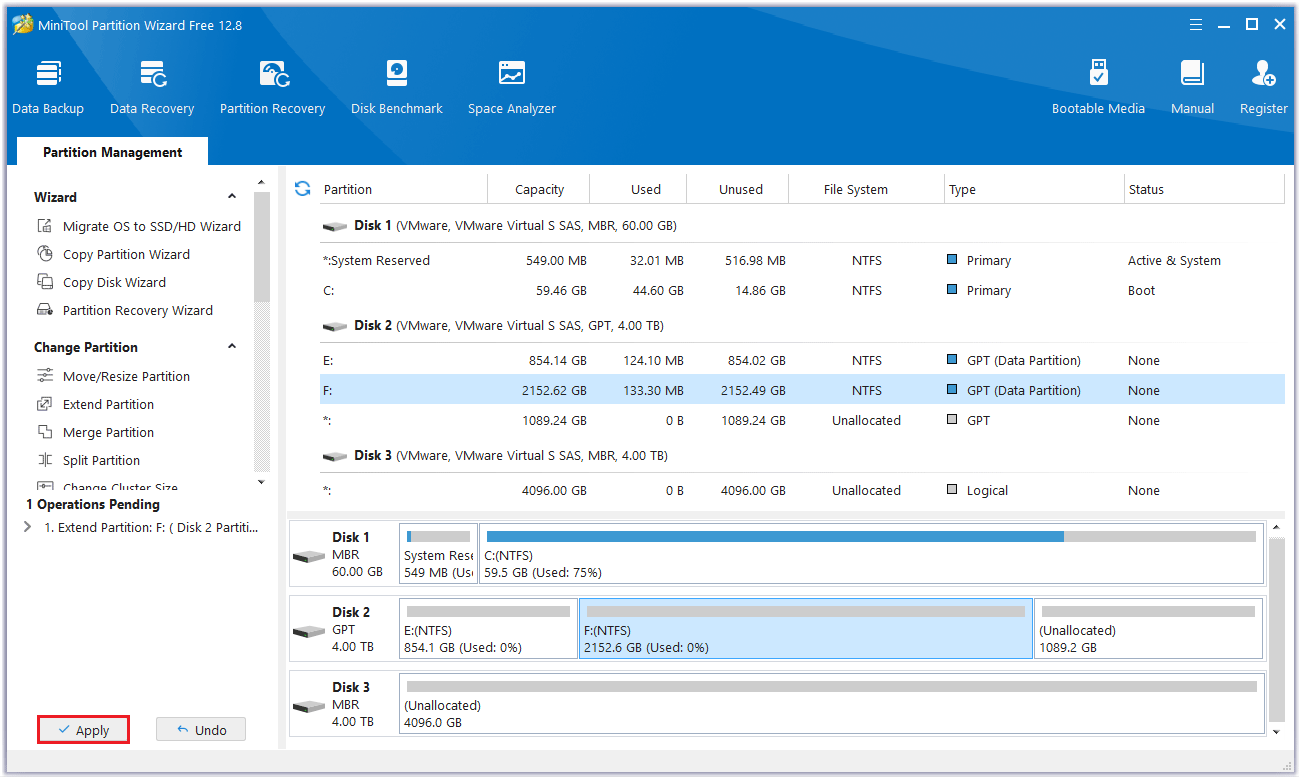
How to Extend Volume Windows 8 with Disk Management
The above article introduces the use of MiniTool Partition Wizard to expand partition Windows 8. Do you also want to know how to expand partition without the help of third-party software? You can use Extend Volume through Windows Disk Management.
Disk Management is a Windows built-in utility that allows you to perform various operations related to the hard disk, including increasing disk space, shrinking disk space, etc. However, this utility has some limitations in extending volumes.
The Extend Volume option is only available for NTFS and RAW partitions. It is not available for FAT32 or other file formats. It also requires that there is continuous unallocated space after the partition. Otherwise, the Extend Volume feature will be grayed out.
To expand partition Windows 8 with Disk Management, here are the steps:
Step 1: Press the Win + X key to open Disk Management.
Step 2: Select the target partition, and right-clickit toselect Extend Volume. Then click Next to continue.
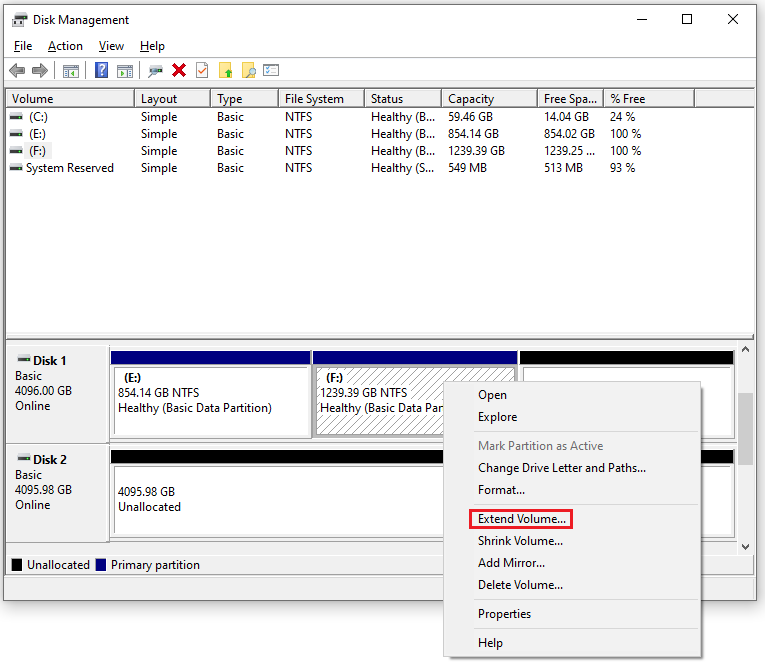
Step 3: When the next new window appears, confirm the disk and then confirm how much unallocated space you want to add to the partition. Then click Next > Finish to complete the operation.
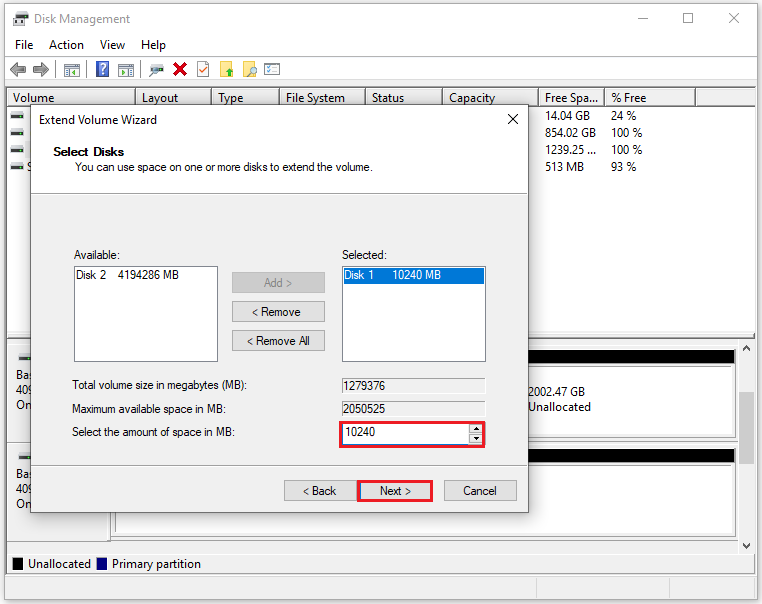
Step 4: Now, you can see that the space of the selected partition has been expanded.
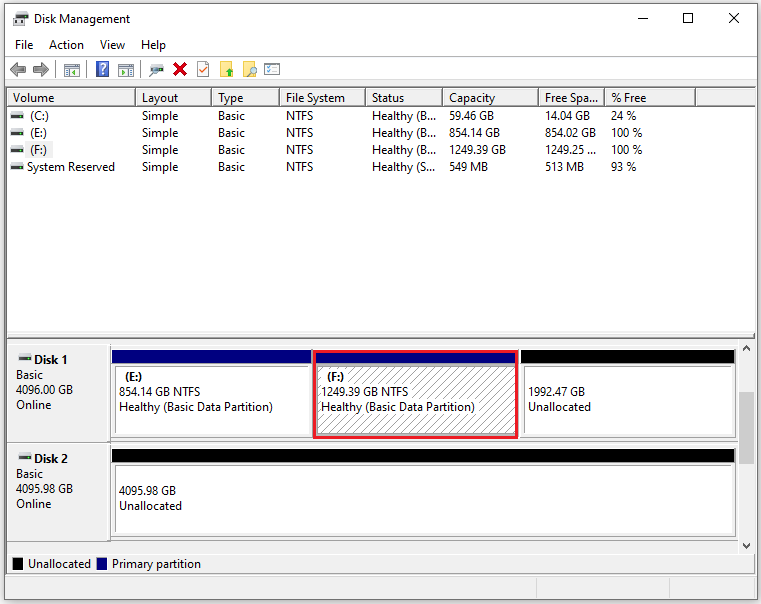
As you can see, it is not possible to extend volume Windows 8 in Disk Management in most cases. If you want to extend a FAT32 partition or there is no adjacent unallocated space on the right, you can use MiniTool Partition Wizard.
Bottom Line
This article introduces two methods to extend partition Windows 8. One is to use a free partition manager – MiniTool Partition Wizard, and the other one is to use the Windows built-in Disk Management. You can easily see that MiniTool Partition Wizard is easier to use and more powerful. It is an all-in-one partition manager that you should try.
Also, if you have any question while using MiniTool Partition Wizard, send us an email via to get [email protected] a quick reply.

![[Full Guide] How to Extend Partition Windows 10](https://images.minitool.com/partitionwizard.com/images/uploads/2024/07/extend-windows-10-partition-thumbnail.png)

User Comments :